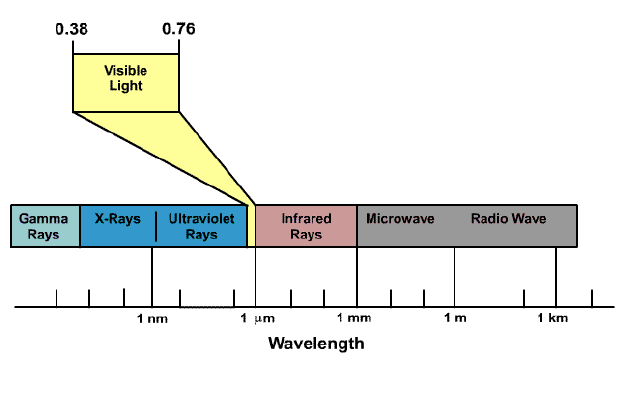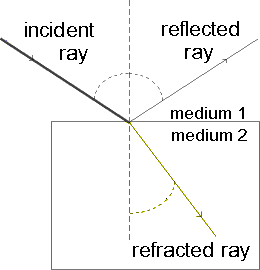|
OPTICS
Optics
is a very important technology in our present society. In this section we
will concentrate on optical systems and their relation to microscopes.
Theoretically, optical equipment can concentrate and move waves within the
electromagnetic spectrum. Electromagnetic waves include radio, visible
light, x-ray, gamma rays, and cosmic waves.

Electromagnetic wave spectrum, microscopes can use more than just light!
Click on picture for example
|

Reflect and refract
Click on Picture for example |
Electromagnetic waves
are considered transverse waves which is a “flip-flopping” of positive
and negative dipoles of particles. Don’t confuse them with physical
waves which are longitudinal waves and are created by an actual
physical disturbance, like sound or seismic waves. Optics incorporates
electromagnetic waves, not physical waves. The movement of waves demonstrates
how light and other electromagnetic waves are moved in a microscope to make an
image.
When a ray of
light travels from one medium to another (for example, from air
through glass), the path can bend. The original ray is called the incident
ray, which can be reflected (bounces off a surface at same angle)
or refracted (goes through substances at a different angle). Since
most microscopes in the classroom use only light, we restrict our information
to visible light rays. Keep in mind that other wavelengths of the
electromagnetic wave spectrum (i.e. microwaves) also follow these rules. |